Understanding Urinary Crystals in Cats: Causes & Care
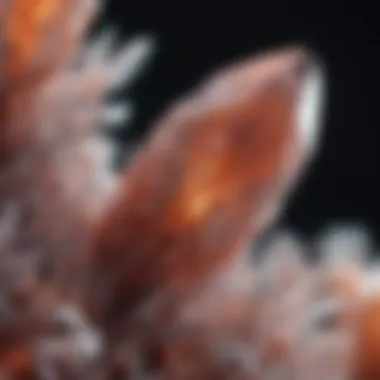
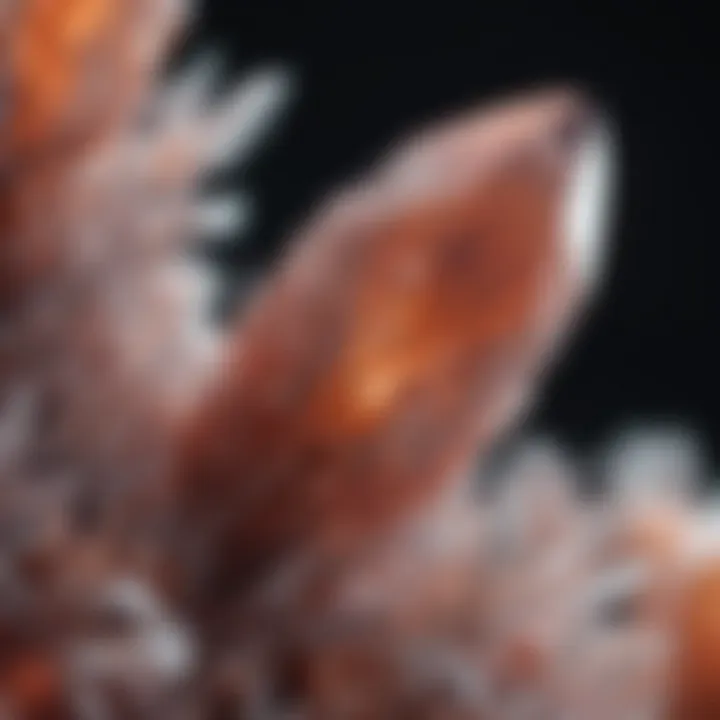
Intro
Understanding urinary crystals in cats is crucial for pet owners who aim to maintain their feline's health. These crystals can be a precursor to more serious conditions, and early detection is essential. While many may not be aware, the presence of urinary crystals can signal underlying issues that require attention. This article will explore main causes, symptoms, and available treatment options. A proper grasp of the topic allows pet guardians to take proactive steps towards their cats' well-being.
Urinary crystals develop in the urine and can form from minerals that precipitate. Factors such as diet, hydration levels, and underlying health conditions contribute to their formation. Certain breeds may be predisposed to these issues, making awareness and tailored care important. By delving into dietary influences and environmental factors, we emphasize effective management of feline urinary health. The goal is to equip owners with the knowledge needed to keep their cats healthy and happy.
Prelims to Urinary Crystals in Cats
Understanding urinary crystals in cats is vital for any cat owner. These tiny stones can develop within the urinary tract and pose serious health risks if ignored. Recognizing these risks leads to better preventive measures, ultimately resulting in improved feline health and well-being.
The significance of this topic cannot be understated. Urinary crystals can lead to conditions like urinary tract infections and blockages. Often, these issues may become chronic if not managed properly. Thus, it is essential to comprehend the underlying factors that contribute to the formation of these crystals. Through awareness, cat owners can take proactive steps to mitigate potential hazards, fostering a healthier living environment for their pets.
Offering insights into the causes, symptoms, and potential treatments can empower owners in their care routines. This article discusses not only the basic concepts of urinary crystals but also provides comprehensive insights into dietary choices and environmental considerations that may help in management and prevention.
One key element is the shift from reactive to proactive pet care. By reading this article, pet owners can gain knowledge to recognize early symptoms and take action before issues escalate.
Defining Urinary Crystals
Urinary crystals are solid formations created from minerals present in the urine of cats. When certain nutrients and minerals become overly concentrated, they can aggregate to form these crystals. Common types include struvite and calcium oxalate, each having distinct formation processes. Understanding what these crystals are can clarify their potential implications on a cat's overall health.
They vary in size and can either pass unnoticed or cause significant discomfort.
Prevalence of the Condition
The prevalence of urinary crystals in cats has been on the rise in recent years. Multiple factors contribute to this increase. For one, certain breeds are genetically predisposed to developing crystals more frequently. Additionally, improper nutrition and stress can lead to higher incidences.
Surveys suggest that nearly 10-20% of cats will experience these issues at least once in their lives. Factors such as age, gender, and lifestyle choices further complicate this scenario.
It is important for owners to remain vigilant, as early detection is crucial for effective treatment.
"Recognizing urinary crystal symptoms early can save your cat from unnecessary pain and costly treatments."
By engaging in regular veterinary check-ups and monitoring dietary habits, pet owners can help reduce the prevalence of urinary crystals in their cats.
Causes of Urinary Crystals in Cats
Understanding the causes of urinary crystals in cats is crucial for preventing and managing this health issue. Urinary crystals can lead to severe complications, including urinary blockages or infections. By comprehending the factors that contribute to their formation, pet owners can take effective measures to minimize risks. This section highlights the primary causes, allowing owners to make informed decisions for their pet's care.
Dietary Factors
High Mineral Content
High mineral content in a cat's diet plays a significant role in the formation of urinary crystals. Foods rich in minerals like magnesium, phosphorus, and calcium can contribute to crystal development. When cats consume these foods in excess, minerals can become concentrated in the urine, leading to crystallization. Therefore, it is vital to monitor the mineral levels in cat food to decrease the chances of crystal formation. Not only does this help maintain urinary health, but it also promotes the overall well-being of the cat.
Insufficient Hydration
Insufficient hydration is another critical contributing factor. When cats do not drink enough water, their urine becomes concentrated. This can cause the minerals to precipitate and crystallize more easily. Ensuring that a cat stays well-hydrated is essential. Encouraging cats to drink more water can significantly aid in diluting their urine, reducing the chance of urinary crystals. Regular access to fresh, clean water is vital for preventing this condition.
Types of Food
The type of food a cat consumes also affects urinary health. There are mainly two categories: wet food and dry food. While dry food is convenient, it often lacks adequate moisture. Wet food, on the other hand, is generally more beneficial because it helps increase a cat's water intake. Including a mix of both types can support urinary health and decrease the risk of crystal formation. Choosing foods specially formulated for urinary health can further enhance prevention.
Genetic Predispositions
Breed-Specific Tendencies
Certain cat breeds show specific tendencies to develop urinary crystals more than others. For example, breeds like the Persian or Burmese have higher risks due to genetic factors. Understanding these tendencies helps in recognizing predispositions in pets. Owners can adopt preventive strategies based on breed-specific knowledge, aiding in proactive care for their cats.
Family History
Family history can also affect a cat's likelihood of developing urinary crystals. If a cat has relatives with a history of urinary issues, it might be more prone to similar problems. Recognizing this aspect is crucial for owners, as it emphasizes the need for monitoring and preventive care.
Age and Gender Influences
Advanced Age
Age is another influencing factor. Older cats are more likely to develop urinary crystals because of changes in metabolism and urinary tract health as they age. Monitoring older cats closely for signs of urinary issues is essential. Regular vet check-ups can catch potential problems early, ensuring timely interventions and better outcomes.
Neutering and Spaying
Neutering and spaying can also impact the likelihood of developing urinary issues. Neutered male cats may exhibit a higher risk because of hormonal changes affecting urine composition. Understanding these changes can help owners take preventive measures, such as diet adjustments and increased hydration.
Environmental Considerations
Stress Factors
Stress factors in a cat’s environment can contribute to urinary problems, including crystal formation. Changes in routine, new pets, or even loud noises can stress cats. Keeping a calm and stable environment is essential for their overall health. Addressing environmental stressors is beneficial for maintaining urinary tract health.
Litter Box Availability
Litter box availability greatly affects a cat’s willingness to urinate. If a cat feels stressed or restricted in its access to a clean litter box, it may hold its urine for extended periods. This situation can exacerbate crystallization. It is essential to provide multiple, clean litter boxes in various locations to encourage regular urination and minimize risks associated with urinary crystals.
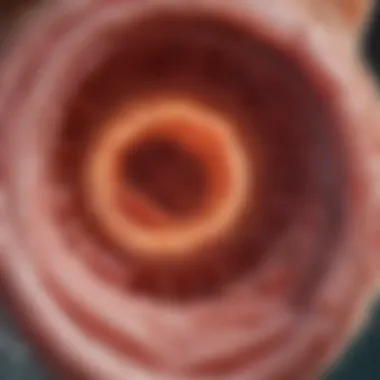
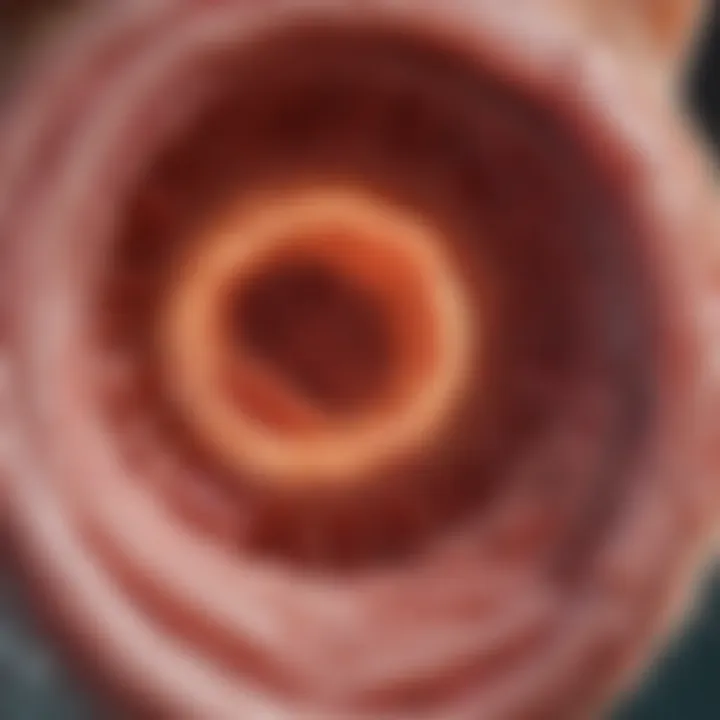
Types of Urinary Crystals Common in Cats
Understanding the types of urinary crystals that form in cats is essential for both pet owners and veterinarians. Each type has unique characteristics that can influence treatment and preventive measures. Recognizing these crystals can help in early diagnosis and management. Knowledge of the types also aid in tailoring dietary changes and care strategies aimed at reducing the incidence of these crystals.
Struvite Crystals
Formation Process
Struvite crystals form in alkaline urine and are often a result of urinary tract infections. The presence of specific bacteria can lead to increased urine pH, making it conducive for struvite formation. A key characteristic of the formation process is the rapid development of these crystals, which can occur in a short time. Understanding this process is beneficial in helping to identify at-risk felines. This information allows owners to monitor their cats more closely and seek veterinary advice when necessary.
Signs and Symptoms
The signs of struvite crystals can often be similar to other urinary issues but include frequent urination and possible signs of straining. Recognizing these symptoms early is helpful for timely intervention. The unique feature of this symptomatology is that it may lead to serious complications if ignored. Thus, being aware of the signs can prompt faster action from pet owners, which is crucial for effective treatment.
Calcium Oxalate Crystals
Formation Process
Calcium oxalate crystals form in acidic urine, often linked to hypercalcemia or increased levels of calcium in the blood. The formation process is typically slower compared to struvite crystals, but the implications can be severe. A crucial point about the formation of calcium oxalate crystals is the potential for recurrence, making this a significant concern for many cats. Knowledge about this process allows pet owners to take preventive steps, especially through dietary management.
Health Implications
The health implications of calcium oxalate crystals can be serious, as they may lead to an increased risk of urinary blockages. This can cause pain and the potential for kidney damage in severe cases. Understanding these implications adds another layer of urgency for cat owners. It highlights the need for regular vet check-ups and monitoring of cat health, aiming at long-term well-being.
Other Less Common Types
Ammonium Urate
Ammonium urate crystals are less common but noteworthy. They typically occur in cats with liver issues or in those who have a genetic predisposition to metabolize uric acid poorly. A critical aspect of ammonium urate is its association with specific health conditions, making awareness essential. Its unique feature is that it may not always present noticeable symptoms, leading to delayed diagnosis.
Cystine
Cystine crystals are also uncommon and result from a genetic disorder affecting the kidney's ability to reabsorb this amino acid. This type can cause recurrent urinary problems. A key characteristic of cystine crystals is their recurring nature, making it crucial for cat owners to recognize and manage. Those affected may require specific dietary adjustments to prevent formation, highlighting the need for tailored care.
Symptoms of Urinary Crystals
Recognizing symptoms of urinary crystals in cats is crucial for early detection and management. Timely attention to these signs can prevent more serious health issues, ensuring the feline remains healthy. Symptoms can manifest in various forms, and understanding them helps in providing appropriate care.
Behavioral Changes
Straining to Urinate
Straining to urinate is a primary symptom indicating discomfort in a cat. This behavior occurs when crystals irritate the urinary tract, causing difficulty during urination. As a key characteristic, straining highlights internal distress. This symptom is a beneficial choice for pet owners to monitor closely. When cats demonstrate signs of difficulty urinating, it is critical to seek veterinary advice promptly.
The unique feature of straining is that it can be both visible and audible; pet owners may notice not only a physical struggle but also signs of discomfort. It can lead to significant anxiety for both the cat and the owner. By recognizing this symptom early on, more serious conditions can be avoided, including blockages.
Increased Vocalization
Increased vocalization often indicates that a cat is experiencing discomfort. When a cat vocalizes more than usual, it can signal distress related to urinary issues. This characteristic is important, as it can easily alert owners that something is wrong. The unique feature of this symptom is that it serves as a direct communication channel between the cat and its owner. Increased vocalization can be both a cry for help and a response to pain.
This symptom can be advantageous in quickly identifying potential problems. However, it may also lead to misinterpretation, as vocalization can stem from multiple sources. Accurate assessment and observation are important for distinguishing between behavioral responses.
Physical Symptoms
Blood in Urine
Blood in urine is a significant physical symptom of urinary crystal formation. This indicator suggests that crystals may be causing irritation or even injury to the urinary tract lining. As a key characteristic, blood in urine necessitates immediate veterinary attention. Observing any discoloration in a cat’s urine is critical for caretakers.
The unique feature of this symptom is its visual nature; owners can easily observe changes in urine color. This symptom plays a crucial role in early detection, as blood in urine often signals an urgent health concern that should not be ignored.
Frequent Urination
Frequent urination is another critical symptom associated with urinary crystals. Cats may feel compelled to urinate more often due to the irritation caused by the crystals. This behavior is noticeable and should raise concerns for pet owners. As a key characteristic, frequent urination can sometimes lead to inappropriate elimination if the cat feels unable to use the litter box.
A unique aspect of this symptom is that it may result in confusion for the owner, as it often overlaps with normal behavioral patterns. Cat owners should be vigilant in recognizing this as a potential health issue, as it often indicates that something is amiss within the urinary system.
Long-Term Health Effects
Potential Blockages
Potential blockages represent a severe consequence of untreated urinary crystals. As crystals aggregate, they can create obstructions in the urinary tract, leading to painful conditions for the cat. This characteristic is significant since blockages can quickly evolve into emergencies. The potentiality of a blockage emphasizes the need for vigilance.
The unique feature of this complication is its rapid onset; a cat can go from exhibiting mild symptoms to facing life-threatening conditions within a brief period. Understanding this risk is essential for promoting proactive health measures, including regular veterinary check-ups.
Kidney Damage
Kidney damage is another long-term health effect stemming from urinary crystal issues. Prolonged irritation and blockages can lead to serious renal complications. As a key characteristic, this condition represents the cumulative effect of neglecting urinary health in cats. Recognizing the potential for kidney damage highlights why awareness of urinary crystals is vital.
The unique aspect of kidney damage is that it may not be immediately apparent. Subtle changes in behavior or physical condition can indicate more serious problems. Owners who are informed and observant can take action sooner, potentially preserving their cat’s overall health.
Diagnosis of Urinary Crystals


Diagnosing urinary crystals in cats is a crucial step in managing their health and preventing potential complications. A precise diagnosis can help identify the type of crystals present, the underlying causes, and the most effective treatment options. For pet owners, understanding the diagnostic process is vital, as it lays the groundwork for informed decisions regarding their cat's nutrition, lifestyle, and overall well-being.
Veterinary Consultations
Importance of Professional Help
Seeking professional help from a veterinarian is fundamental when it comes to diagnosing urinary crystals. Vets possess the training and expertise necessary to evaluate the urinary health of cats accurately. By consulting a vet, pet owners ensure that they receive a comprehensive assessment of their pet's condition.
The key characteristic of professional help is the ability to identify potential underlying issues that may not be visible to the untrained eye. This makes it a beneficial choice for owners who may not know where to start if their cat shows symptoms of urinary distress. Vets use their knowledge to guide appropriate testing, which is essential for effective diagnosis and subsequent treatment.
A unique feature of professional veterinary consultations is the access to advanced diagnostic tools and techniques, which can provide a thorough evaluation. This includes not just looking for crystals, but also assessing general urinary health.
History and Examination
Gathering a thorough history and conducting a physical examination are essential components of diagnosing urinary crystals. This process allows veterinarians to collect information on the cat's lifestyle, dietary habits, and any prior urinary issues.
The key characteristic of this approach is that it incorporates the cat's entire health picture, not just the current issue. It helps in understanding factors that may have contributed to the formation of crystals. This method is a popular choice because comprehensive data leads to better diagnostic accuracy.
A unique feature of this phase is the role of the owner in providing relevant history, which can significantly influence the outcomes of the examination. For instance, dietary changes or increased stressors can be crucial clues. However, this relies heavily on the owner's visibility into their pet's routine, which may sometimes be limited.
Diagnostic Tests
Urinalysis
Urinalysis is a commonly employed method for diagnosing urinary crystals in cats. This test involves evaluating the composition of the cat’s urine, which can show the presence of crystals, bacteria, and other abnormalities.
The key characteristic of urinalysis is its ability to provide immediate insight into the cat's urinary health. It is a beneficial technique in this context, as it is generally non-invasive and can be performed quickly during a veterinary visit. Oftentimes, results from this test can help dictate the next steps in treatment.
A unique feature of urinalysis is its ability to identify not only the presence of crystals but also their specific types, which is crucial for tailoring treatment options. However, a downside is that it may not always explain the underlying cause of crystal formation completely.
X-Rays and Ultrasound
X-rays and ultrasound are further diagnostic tools used to visualize the urinary tract in cats. These imaging techniques can reveal the location of urinary crystals, stones, and other structural abnormalities that urinalysis alone cannot detect.
The key characteristic of these tests is their ability to provide a detailed picture of the urinary system's anatomy. They are popular choices for veterinarians when more information is needed beyond what urine tests can provide. Assessing the condition through images can lead to a more accurate diagnosis and treatment plan.
A unique feature of X-rays and ultrasound is their non-invasive nature. They allow veterinarians to observe internal structures without needing invasive procedures. However, one disadvantage is the requirement for specialized equipment and trained personnel, which may not be available in all veterinary practices.
The diagnosis of urinary crystals is a step that plays a pivotal role in ensuring the appropriate care for your cat. By understanding the necessity of professional evaluation, detailed history, and advanced diagnostic testing, pet owners can take charge of their feline's health.
Treatment Options for Urinary Crystals
Treating urinary crystals in cats is vital for maintaining their overall health and preventing more serious complications. Understanding the treatment options available can make a substantial difference in the outcome for your pet. Effective treatment not only alleviates current issues but also helps in preventing future occurrences. This section will cover dietary adjustments, medication protocols, and surgical interventions, examining their respective roles in managing this condition.
Dietary Adjustments
Specialized Diets
Specialized diets play a crucial role in managing urinary crystals in cats. These diets are formulated specifically to modify the mineral composition of the urine. By doing so, they can either dissolve certain types of crystals or prevent new ones from forming.
One key characteristic of specialized diets is their controlled levels of magnesium, phosphorus, and calcium, nutrients that can contribute to crystal formation if present in excess. This makes them a beneficial choice for cats prone to urinary issues.
The unique feature of specialized diets is their customization based on specific needs, such as urinary tract health or age. While they provide advantages, such as effective management of urinary crystals, there can also be disadvantages, mainly that they might be more expensive than regular cat food.
Hydration Techniques
Hydration techniques are another important aspect of treating urinary crystals. Encouraging your cat to drink more water is essential as it helps dilute the urine, reducing the concentration of minerals that can form crystals.
One of the key features of hydration techniques is the use of water fountains, which often attract cats better than still water. This option is a popular choice among pet owners looking to enhance hydration in their cats.
Unique features of these techniques include wet food diets and providing additional water sources. The advantages are substantial, particularly in preventing stone formation and promoting urinary health. However, some cats may still resist increased water intake, which can be a challenge.
Medication Protocols
Pain Management
Pain management is fundamental when treating urinary crystals that cause discomfort. It focuses on alleviating your cat's pain during urination, which can greatly improve their quality of life.
A key characteristic of pain management is the use of non-steroidal anti-inflammatory drugs (NSAIDs) that are safe for cats. This approach makes it a popular option in veterinary settings.
The unique feature of pain management includes the need for careful dosing and monitoring, as some medications may not be suitable for all cats. While pain relief is important, there can be side effects that require attention.
Antibiotics
Antibiotics may be necessary if an infection accompanies urinary crystals. This is particularly important, as crystals can increase the risk of urinary tract infections.
The main characteristic of antibiotics is their ability to address bacterial infections quickly, making them a beneficial choice in the treatment plan.
A unique feature is the need for proper diagnosis prior to treatment, as antibiotics are ineffective against non-bacterial causes. While they can clear infections, adverse effects sometimes occur, and careful veterinary guidance is necessary.
Surgical Interventions
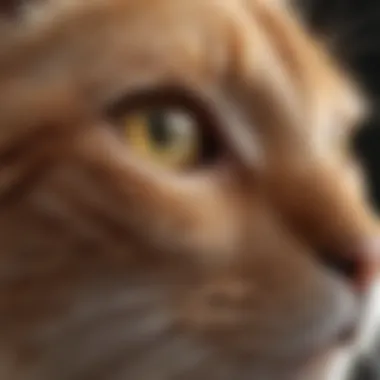

Indications for Surgery
In some cases, surgical interventions become necessary when urinary crystals lead to blockages or severe complications. These situations may require immediate action to prevent more extensive damage to the urinary tract.
One key characteristic of indicators for surgery is the severity of symptoms, such as inability to urinate, which signals a need for urgent care. It becomes a crucial option for cases where other treatments have failed.
The unique feature of surgical interventions is the potential for long-term resolution of chronic issues. However, surgeries can be invasive and require careful consideration of risks and benefits before proceeding.
Post-Operative Care
Post-operative care is essential for the recovery of cats undergoing surgery for urinary crystals. This phase focuses on monitoring their recovery and ensuring they do not develop complications post-surgery.
A key characteristic of post-operative care includes regular check-ups and medication management to promote healing. This makes it a beneficial component of the treatment process.
Unique features involve dietary adjustments and hydration plans during recovery. While comprehensive care aids in healing, it requires commitment from pet owners to adhere to veterinary guidelines.
Early recognition and treatment of urinary crystals significantly improves the chances of a smooth recovery and long-term health in cats.
By understanding these treatment options, cat owners can effectively participate in managing their pets’ urinary health.
Preventive Measures
Preventive measures are an essential part of managing urinary crystals in cats. Taking proactive steps can significantly reduce the risk of the condition and maintain optimal urinary health in felines. Knowing how to prevent urinary crystals involves understanding various factors, including regular veterinary visits, optimal feeding practices, and effective environmental management. These elements work together to create a healthy lifestyle for cats and help in early detection of any issues.
Regular Veterinary Visits
Regular veterinary visits play a significant role in maintaining feline urinary health. They provide an opportunity for pet owners to stay informed about their cat's overall well-being and address any concerns related to urinary health early on.
Monitoring Health Progress
Monitoring health progress during veterinary visits is crucial. It allows veterinarians to catch any early signs of urinary crystal formation before they become severe. The key characteristic of this monitoring is its focus on trend analysis of the cat’s urinary health over time. This aspect makes it a beneficial choice for cat owners aiming for preventive care.
A unique feature of monitoring health progress involves tracking changes in urine composition and behavior. Such tracking can be beneficial, as it can help in identifying subtle changes in the cat's health that may lead to serious conditions if left unattended.
Routine Check-Ups
Routine check-ups are another important aspect of preventive care. These regular consultations give veterinarians a chance to perform comprehensive health assessments. The key characteristic of routine check-ups includes a detailed examination of the cat’s urinary tract health. This is beneficial because it fosters a consistent understanding of the pet's health condition.
One unique feature of these check-ups is the opportunity to discuss any observed changes in behavior or diet with the veterinarian. This communication can lead to early interventions, which are advantageous in preventing urinary issues such as crystals.
Optimal Feeding Practices
Optimal feeding practices are crucial for preventing urinary crystals in cats. This involves understanding the dietary needs of felines and making appropriate adjustments to their diets for better long-term health outcomes.
Balanced Nutrition
Balanced nutrition is essential for a cat’s well-being and directly contributes to urinary health. The key characteristic of balanced nutrition includes providing a mix of protein, fats, and carbohydrates appropriate for the specific cat's life stage. This aspect is beneficial as it reduces the risk of mineral imbalances that can lead to crystal formation.
A unique feature of balanced nutrition is the inclusion of high-quality protein sources. Cats are obligate carnivores, and providing them with adequate protein can promote a healthy urinary environment. The advantages of balanced nutrition are clear; however, careful attention must be paid to the varying needs of different breeds and ages, which can complicate feeding choices.
Water Intake Strategies
Water intake strategies are another important component of feline nutrition. Ensuring that cats stay properly hydrated is key in preventing urinary crystals. The focus here is on encouraging cats to drink sufficient water. This is beneficial because hydration directly dilutes the minerals in urine, thus reducing the likelihood of crystal formation.
A unique feature of water intake strategies could include using water fountains or specially designed bowls that attract cats to drink more frequently. The advantages of these strategies are significant, as enhancements in water consumption can lead to notable improvements in urinary health and overall vitality.
Environmental Management
Environmental management is vital for creating a comfortable space for cats, which in turn can aid in preventing urinary problems.
Stress Reduction Techniques
Stress reduction techniques have a direct impact on a cat's health. Stress can lead to behavioral changes, including urinary issues. The key characteristic of these techniques is their focus on creating a calm, safe environment. This is a beneficial approach as it minimizes instances of anxiety-related urinary problems.
A unique feature of stress reduction methods includes activities such as interactive play or providing safe hideaway spots for cats to retreat to. The advantages here are clear; a relaxed cat is less likely to experience urinary distress, which can lead to crystal formation.
Litter Box Hygiene
Litter box hygiene is fundamental for a cat’s urinary health. Keeping the litter box clean is essential in promoting good habits in cats. The key characteristic of proper litter box hygiene is regular cleaning to remove waste. This practice is highly beneficial because it encourages cats to use the litter box more willingly, thereby reducing the risk of avoidance behaviors that may lead to urinary issues.
A unique feature of maintaining litter box hygiene involves using high-quality litter designed to control odors and absorb moisture effectively. The advantages of such litter are clear; it creates a pleasant environment for the cat, thus promoting better urinary health.
In summary, preventive measures are a multi-faceted approach. Regular veterinary visits, optimal feeding practices, and effective environmental management play significant roles in promoting urinary health in cats.
Epilogue and Key Takeaways
Understanding urinary crystals in cats is crucial for every pet owner. This article has covered the complexities surrounding the causes, symptoms, and treatment options for this issue. By gaining insights into urinary crystals, cat owners can take informed actions to protect their pets’ health.
Summary of Urinary Crystals in Cats
Urinary crystals in cats develop largely due to factors such as diet, genetics, and health conditions. Different types of crystals including struvite and calcium oxalate present distinct health challenges. Identifying these crystals often involves observing behavioral changes and consulting a veterinarian for diagnostic tests. In addition, how you feed your cat and manage its environment can play significant roles in both the onset and prevention of urinary crystals.
Signs of urinary crystals can vary from simple discomfort to serious complications like blockages. Hence, an awareness of subtle changes in your cat's urination habits holds significant importance. This proactive approach can lead to early intervention and better outcomes for the cat’s health.
Encouraging Proactive Care
Encouraging proactive care can drastically improve a cat's urinary health. Regular veterinary visits serve as a foundation for monitoring urinary conditions. These check-ups enable early detection of potential issues, which can be critical for preventing complicated health problems.
Implementing optimal feeding practices, including providing a balanced diet with adequate hydration, is vital. Pet owners should also aim to create stress-free environments that encourage healthy behaviors. Regularly cleaning the litter box is a simple yet effective practice that can have a positive impact on a cat's overall well-being.



